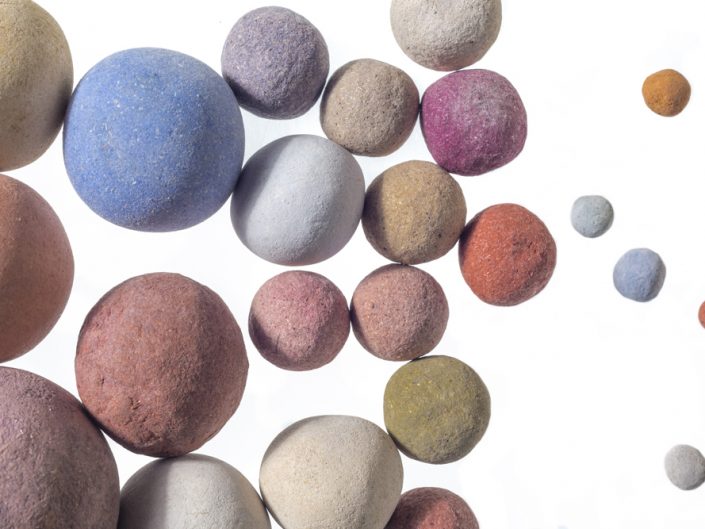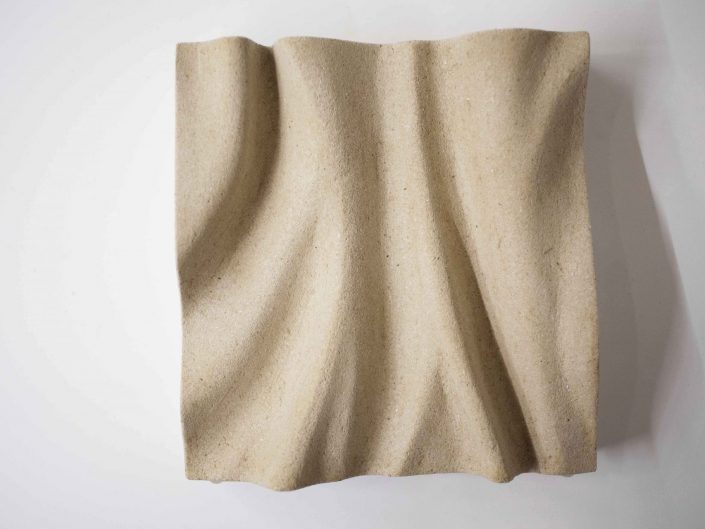TEAM: Heidi Turunen (Aalto University)
BACKGROUND
Nanocellulose and wood dust or coarse sawdust are mixed together to produce the material to be cast. Watery material combination may be poured into designed moulds resulting in hard predetermined shapes after the water has evaporated. The cast pieces are reproducible by using the moulds again. Machining is not necessary to carry out, though light surface grinding may be necessary depending on the applications. Shaping possibilities, when using moulds, are somewhat similar to the cast materials in general. Completely wood-based material combination has a low environmental impact and is recyclable.
CHARACTERISTICS
Surface structures of the material can be designed by using moulds or alternating granularity of the wooden ingredient. Material can be dyed for example by using natural mineral pigments or natural colours. The tone of the dyed material is soft, due to inherent beige colour of the wood. The surface of the material feels warm as wooden surfaces.
TECHNICAL DATA
Shrinkage of the casted material and strength of the dried material are dependent on mixing ratio of the raw material. However shrinkage is relatively lower than if compared with nanocellulose, just a few percent. Acoustic features are presumably close to the properties of the wooden material.
POTENTIAL APPLICATIONS
When wooden materials are used in malleable form, application areas are expanding. Outcomes can be used in various products such as wall reliefs for art works, sound directing designed pieces, applications in sports or toy industry, jewelry, shoes, disposable applications in gardens, interior decoration products, furnishings or products related to construction industry.
Photos: Eeva Suorlahti




